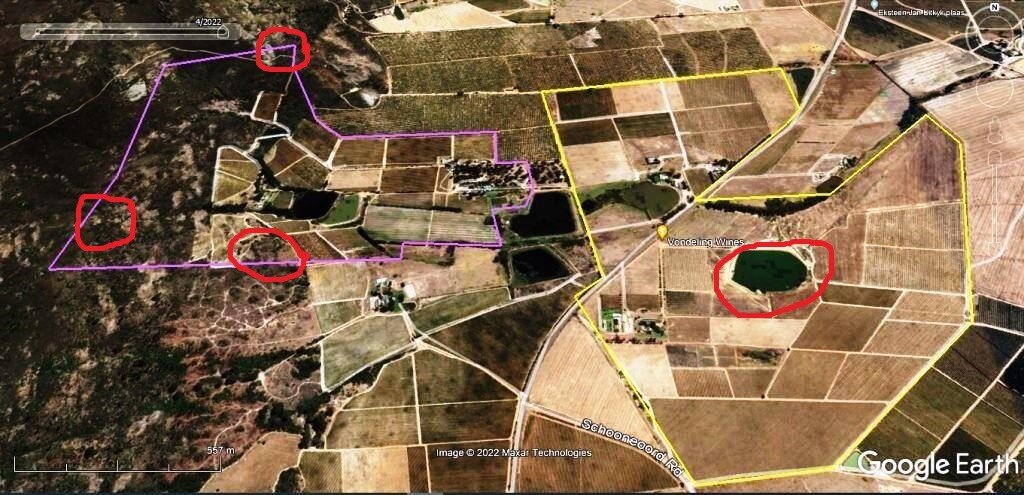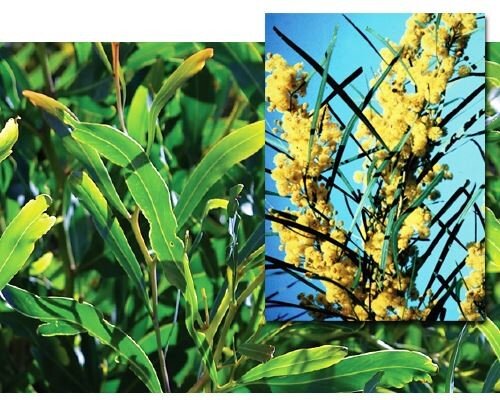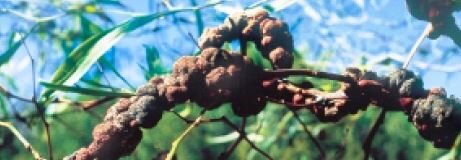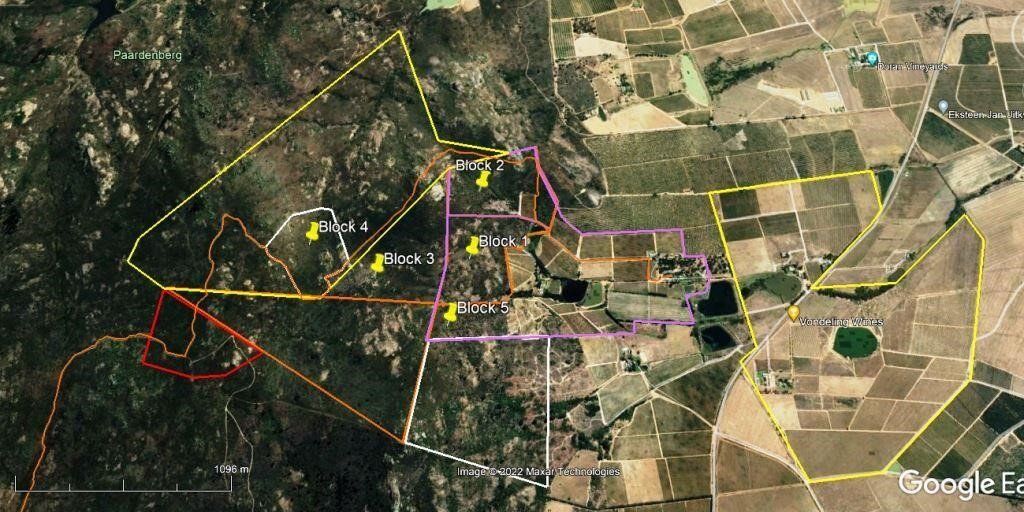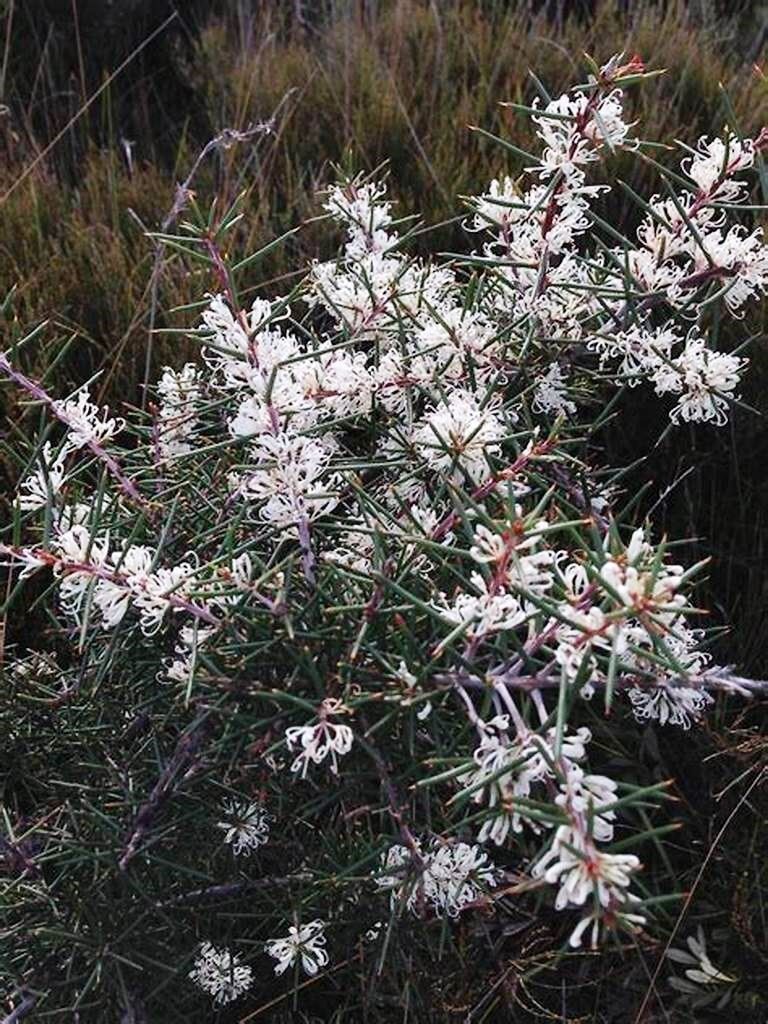By Bridget Johnsen and Rory Allardice | Project Leader and Project Contributor
With huge thanks to Naz and the UK Dynamix team, PSI Projects has been able to recommence its program of alien clearing on the Paardeberg. PSI Projects was contracted by Vondeling and Bowwood Wines in April to clear invasive alien plants on the properties under their jurisdiction as part of their biodiversity management obligations. The mission of these wine estates is to produce wines of excellence, in harmony with nature. They are WWF Conservation Champion Wine Estates, farming for future generations in an ethical, and sustainable manner.
The Paardeberg Mountain is an Inselberg, the conservation of which is vitally important for the conservation of the fynbos biome, as well as the ecosystem services it delivers to the farms at its base and beyond. Notably, there are four known species that are endemic to the mountain. Babiana noctiflora, Erica hippuris, Oscularia paardebergenis and Serruria roxberghii. There are a number of species listed in the red data book.
The greatest threats to species in the fynbos biome are:
There are areas on the Paardeberg which have not been burnt for the last 40 years affecting biodiversity and healthy species populations. Invasive alien plants have been controlled effectively on the mountain but regular annual follow-up has not taken place. As a consequence, there are mature flowering and seeding alien plants. The need for firebreaks is urgent so that a prescribed burn can take place in the next year or two. There is also considerable work to be done in erosion management.
Vondeling Wines has provided a team of six workers plus Farm Manager in response to the PSI offering of equipment, herbicide and oversight to assist Paardeberg’s private farmers with alien vegetation management, erosion prevention and creation of firebreaks! Over the past 3 months, the PSI effort commenced with servicing and sorting of the equipment required, then training of the individuals involved and the construction of a guiding map, demarcating the various blocks showing alien infestation! With great resilience and discipline, the team has systematically approached the enormous task of battling through thick Fynbos to ensure that the natural landscape is kept as pristine as possible! The work is hard and takes time, not because of the density of the alien plants, but because of the age and density of the fynbos.
Invasive alien clearing was initiated on the Paardeberg on the properties Bowwood, Klein Vondeling, Vondeling, and a portion of Botterkloof. The flats between the vines and groves were tackled first clearing mainly Port Jackson. The plants were widely dispersed with the occasional clump. (See Map A). Because of a wind factor, the plants were felled and stump treated. The herbicide used was Lumberjack (Triclopyr) at a 3% dilution applied with hand held 2 litre spray bottles. Most of the plants were adults and had flowered and set seed. There had been few young plants and no seedlings. Encouragingly most of the plants had been infected with the gall rust fungus ( Uromycladium tepperianum). The rust usually controls the plants most effectively when there are big dense populations. This was not the case on Vondeling.
We found a few Sesbania (S. punicea) plants in the water cannel running from the Klein Vondeling dam under the Slent tar road. There are three biocontrol organisms which have reduced the spread and populations of Sesbania. Trichapion lativentre the bud-feeding weevil destroys almost all the buds and, as a result, pod production by the plants is reduced by more than 98 %. Rhyssomatus marginatus is a seed-feeding weevil whose larvae destroy the remaining seeds. Neodiplogrammus quadrivittatus, the stem-boring weevil . Adult females deposit single eggs under the bark of stems and branches of Sesbania trees. Grubs feed in the woody parts of the plants just below the bark. Tunnelling activity of feeding grubs destroys vascular tissues and inhibits movement of water and nutrients around the plants. In the process, plants are frequently ‘ring-barked’. We found none of the above bio controls on the plants and thus chopped them down.
The team followed up on small poplar trees above the Bowwood house breaking them below knee height and spraying them with Lumberjack. The team has covered the eastern slopes of the mountain from the leopard tree northwards along the road and to the flats as indicated on Map A. There are significant clumps of silky hakea (Hakea sericea). Most of the plants have been infected with the gum forming fungus Colletotrichum acutatum but there seems to be evidence of the stem boring weevil too. In May, the team cleared Blocks 1 through to 5 indicated on Map B. Blocks 1, 2, 3 and 5 were infested mainly with Hakea and Port Jackson with the occasional pine. The section of Botterkloof that has been cleared has mainly been pine with the occasional Port Jackson.
As the team move down the “kloof” or gorge, there will be more Port Jackson. The man days projection for Botterkloof (182 ha) is 1060 days. With a team of 7 it’ll take about 152 working days. This is not because of the density of the alien plants, but because of the density of the fynbos and the difficulty to get to the infestations. Some time will be saved accessing the kloof from the bottom, but whether from the bottom or the top the same areas must be covered.
Again we are so grateful for the contributions received via GlobalGiving, and will be able to expand out offering to others who have much greater alien vegetation infestations without the means to clear them or create firebreaks, and thus increasing the risk to us all! Special appreciation again to Naz and the Dynamix team!!
Links:
Project reports on GlobalGiving are posted directly to globalgiving.org by Project Leaders as they are completed, generally every 3-4 months. To protect the integrity of these documents, GlobalGiving does not alter them; therefore you may find some language or formatting issues.
If you donate to this project or have donated to this project, you can receive an email when this project posts a report. You can also subscribe for reports without donating.
Support this important cause by creating a personalized fundraising page.
Start a Fundraiser